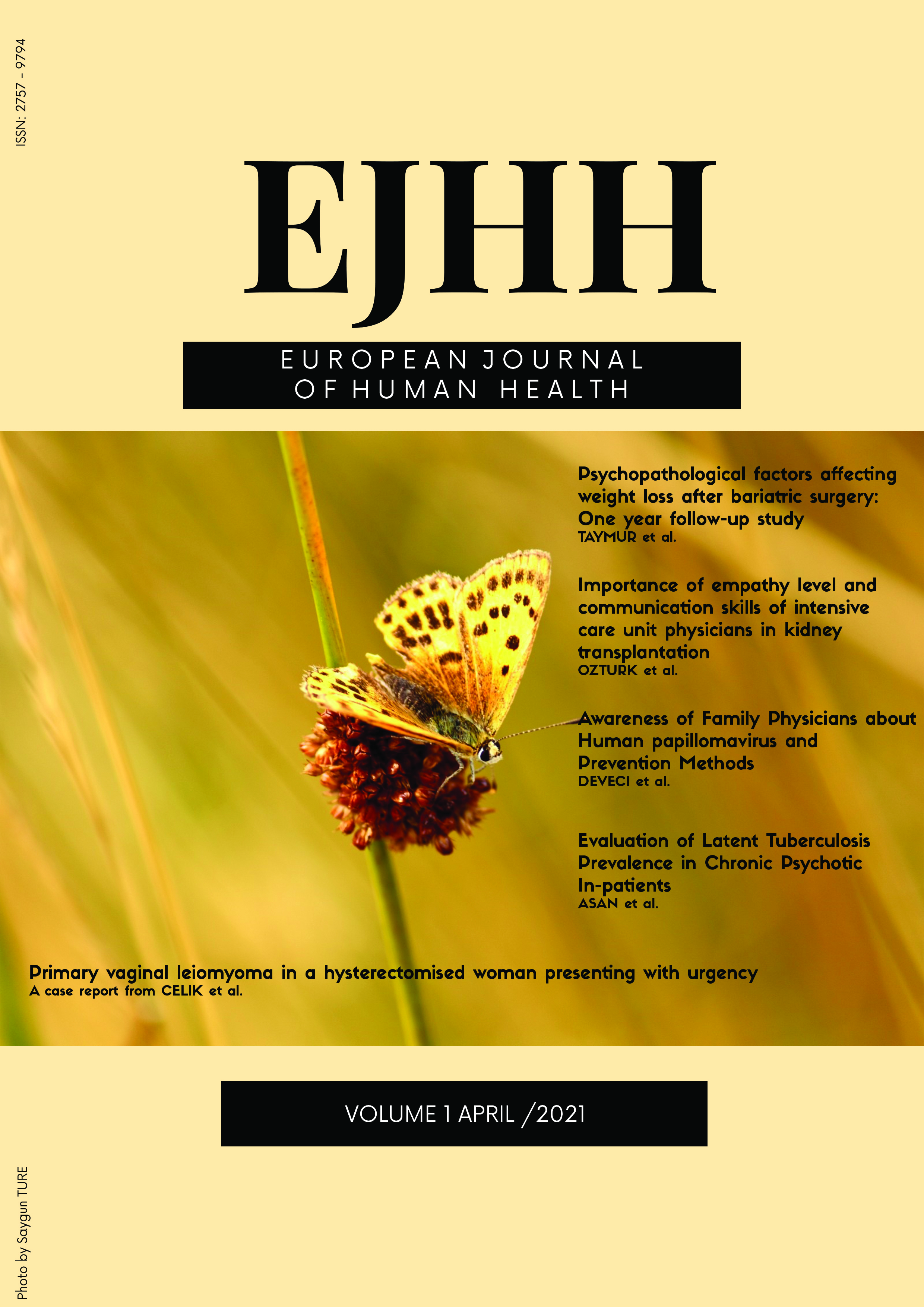Metachronous Lung Cancer in the Opposite Lung in a Patient with Long-survival Small Cell Lung Carcinoma
Author :
Abstract
Keywords
Abstract
Small Cell Lung Cancer (SCLC) is an aggressive disease that accounts for 14% of all lung cancers. It is known that the risk of developing a second primary tumor is high in cured SCLC. Here, we aimed to present metachronous cancer that developed in the contralateral lung at the 11th year in our case of small cell lung cancer, which was fully cured. A 52-year-old female patient at the time of diagnosis received chemoradiotherapy with a diagnosis of limited-stage small cell lung cancer in the left lung 14 years ago. At the 11th year of follow-up, segmentectomy was performed because of the detection of Stage1 lung adenocarcinoma in the contralateral lung. She is in the 3rd year postoperatively without any problems. Patients with long survival should be carefully evaluated for metachronous lung cancer in their controls. It should not be forgotten that curative treatment of second primary tumors that can be detected in the early period will positively affect the survival of patients.
Keywords
- 1 American Cancer Society. Cancer Facts & Figures2014. Atlanta, GA: American Cancer Society; 2014.
- 2. Aberle DR, DeMello S, Berg CD, et al. Results of the2 incidence screenings in the National Lung Screening Trial. N Engl J Med. 2013; 369: 920- 931.
- 3.Siegel Rebecca, L.,& Miller Kimberly, D. (2019).Jemal Ahmedin. Cancer statistics, 2019. CA: a cancer Journal for clinicians, 69(1), 7-34.
- 4.Gazdar, A. F.,Bunn, P. A., &Minna, J. D. (2017).Small-cell lung cancer: what we know, what we needto know and the path forward. Nature Reviews Cancer, 17(12), 725-737.
- 5. Rudin, C. M., & Poirier, J. T. (2017). Shining light onnovel targets and therapies. Nature reviews Clinical oncology, 14(2), 75-76.
- 6.Spiro, S. G., James, L. E., Rudd, R. M., Trask, C. W.,Tobias, J. S., Snee, M., &Hackshaw, A. K. (2006). Earlycompared with late radiotherapy in combined modalitytreatment for limited disease small-cell lung cancer: aLondon Lung Cancer Group multicenter randomizedclinical trial and meta-analysis. Journal of clinicaloncology, 24(24), 3823-3830.
- 8. Fried, D. B., Morris, D. E., Poole, C., Rosenman, J.G., Halle, J. S., Detterbeck, F. C., ... & Socinski, M. A.(2004). Systematic review evaluating the timing ofthoracic radiation therapy in combined modalitytherapy for limited-stage small-cell lung cancer.Database of Abstracts of Reviews of Effects (DARE): Quality-assessed Reviews [Internet].
- 9. Heyne, K. H., Lippman, S. M., Lee, J. J., Lee, J. S.,& Hong, W. K. (1992). The incidence of secondprimary tumors in long-term survivors of small-celllung cancer. Journal of clinicaloncology, 10(10), 1519- 1524.
- 10. Foster NR, Mandrekar SJ, Schild SE, et al.Prognostic factors differ by tumor stage for small celllung cancer: a pooled analysis of North Central Cancertreatment group trials. Cancer 2009; 115:2721-2731.
- 11. Takada M, Fukuoka M, Kawahara M, Sugiura T,Yokoyama A, Yokota S, et al. Phase III study ofconcurrent versus sequential thoracic radiotherapy incombination with cisplatin and etoposide for limited-stage small cell lung cancer: results of the JapanClinical Oncology Group Study 9104. J Clin Oncol 2002;20(14):3054–60.
- 12. Murray N, Coy P, Pater JL, Hodson I, Arnold A, ZeeBC, et al. Importance of timing for thoracic irradiationin the combined modality treatment of limited stagesmall-cell lung cancer. The National Cancer Institute ofCanada Clinical Trials Group. J Clin Oncol 1993;11(2):336–44.
- 13. Yildirim, H. C., Ergen, Ş. A., Tiken, E. E., Zalova,G., Turna, H., Öksüz, D. Ç., & Di̇nçbaş, F. Ö. (2015).Limited stage small cell lung cancer: Treatment resultsand prognostic factors. Turkish Journal of Oncology, 30(4).
- 14. De Ruysscher, D., Pijls-Johannesma, M.,Vansteenkiste, J., Kester, A., Rutten, I., & Lambin, P.(2006). Systematic review and meta-analysis ofrandomised, controlled trials of the timing of chestradiotherapy in patients with limited-stage, small-cell lung cancer. Annals of oncology, 17(4), 543-552.
- 15. De Ruysscher, D., Pijls-Johannesma, M., Bentzen,S. M., Minken, A., Wanders, R., Lutgens, L., & Lambin,16. Arriagada, R., Le Chevalier, T., Riviere, A., Chomy,P., Monnet, I., Bardet, E., ... & Laplanche, A. (2002).Patterns of failure after prophylactic cranial irradiationin small-cell lung cancer: analysis of 505 randomized patients. Annals of oncology, 13(5), 748-754.
- 17. Smythe WR, Estrera AL, Swisher SG, MerrimanKW, Walsh GL, Putnam JB Jr, et al. Surgical resectionof non-small cell carcinoma after treatment for smallcell carcinoma. Ann Thorac Surg 2001;71(3):962-6
- 18. Richardson, G. E., Tucker, M. A., Venzon, D. J.,Linnoila, R. I., Phelps, R., Phares, J. C., ... & Johnson,B. E. (1993). Smoking cessation after successfultreatment of small-cell lung cancer is associated withfewer smoking-related second primary cancers. Annals of Internal Medicine, 119(5), 383-390.
- 19. Kelley, M. J., Nakagawa, K., Conrad, N. K.,LeRiche, J., Murray, N., Lee, J. S., ... & Johnson, B. E.(1996). Genetic analysis of second primary lungcancers in patients surviving small cell lung cancer. Clinical cancer research, 2(7), 1103-1105.
- 20. Battafarano, R. J., Force, S. D., Meyers, B. F., Bell,J., Guthrie, T. J., Cooper, J. D., &Patterson, G. A.(2004). Benefits of resection for metachronous lungcancer. The Journal of Thoracic and Cardiovascular Surgery, 127(3), 836-842.
